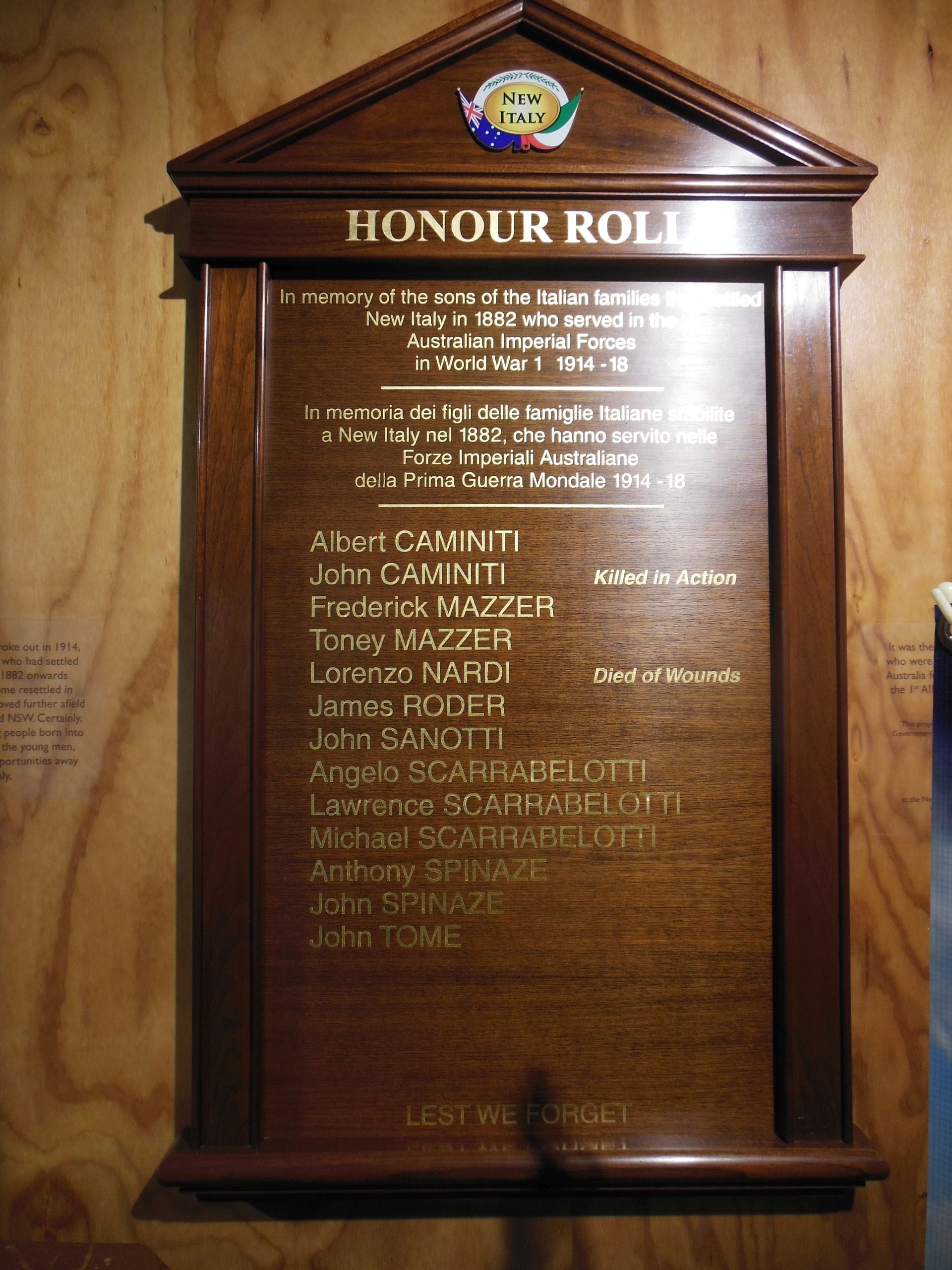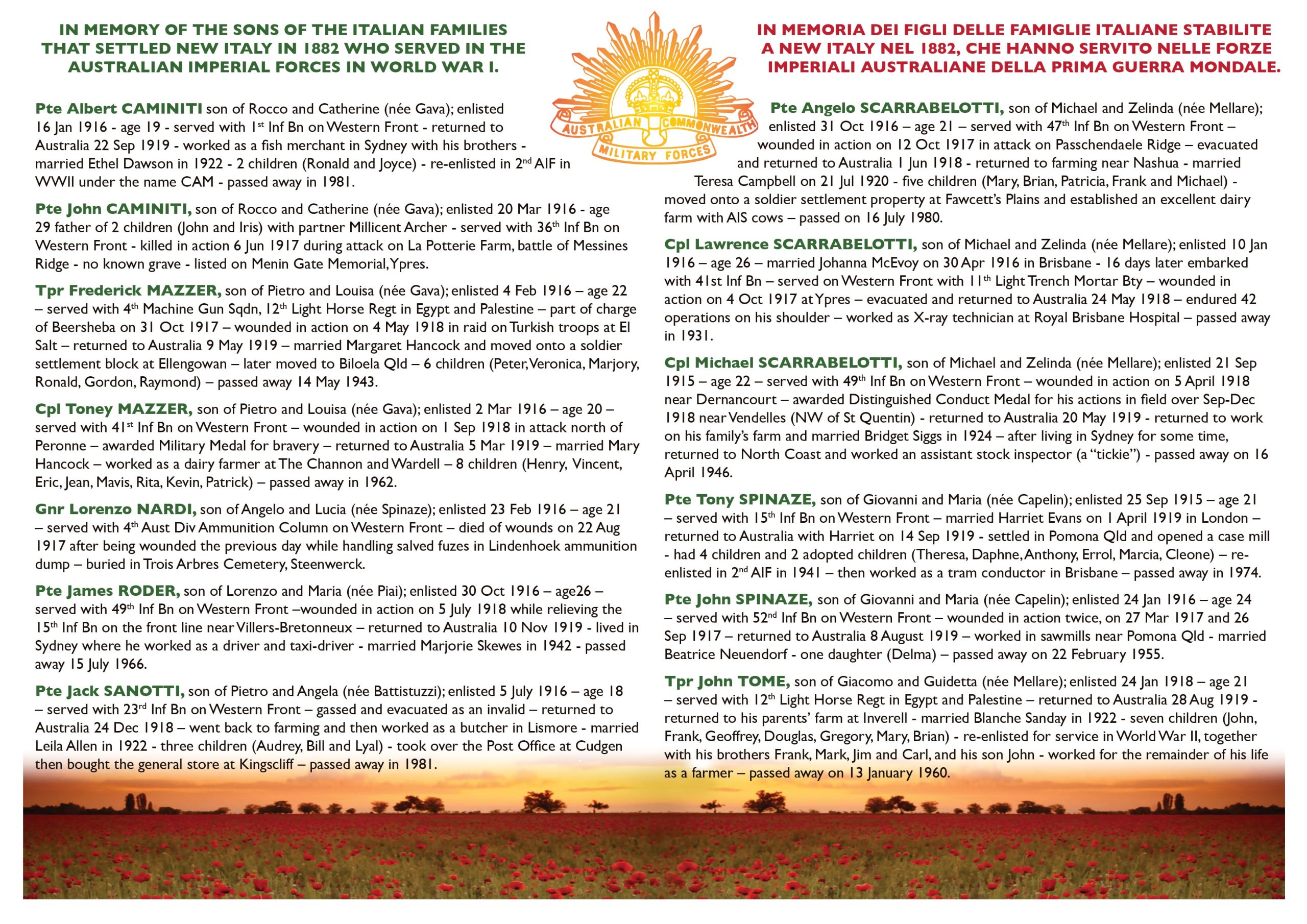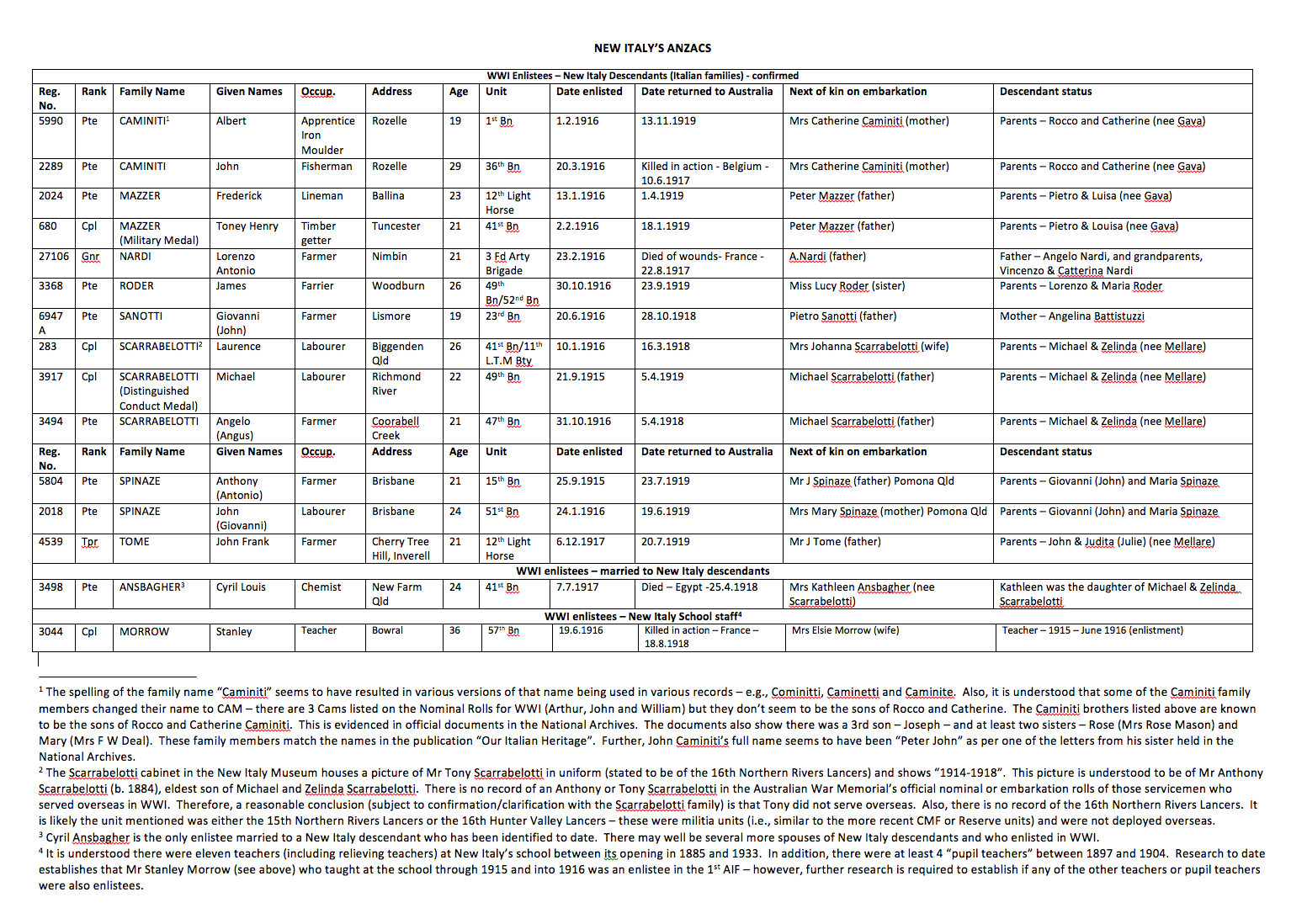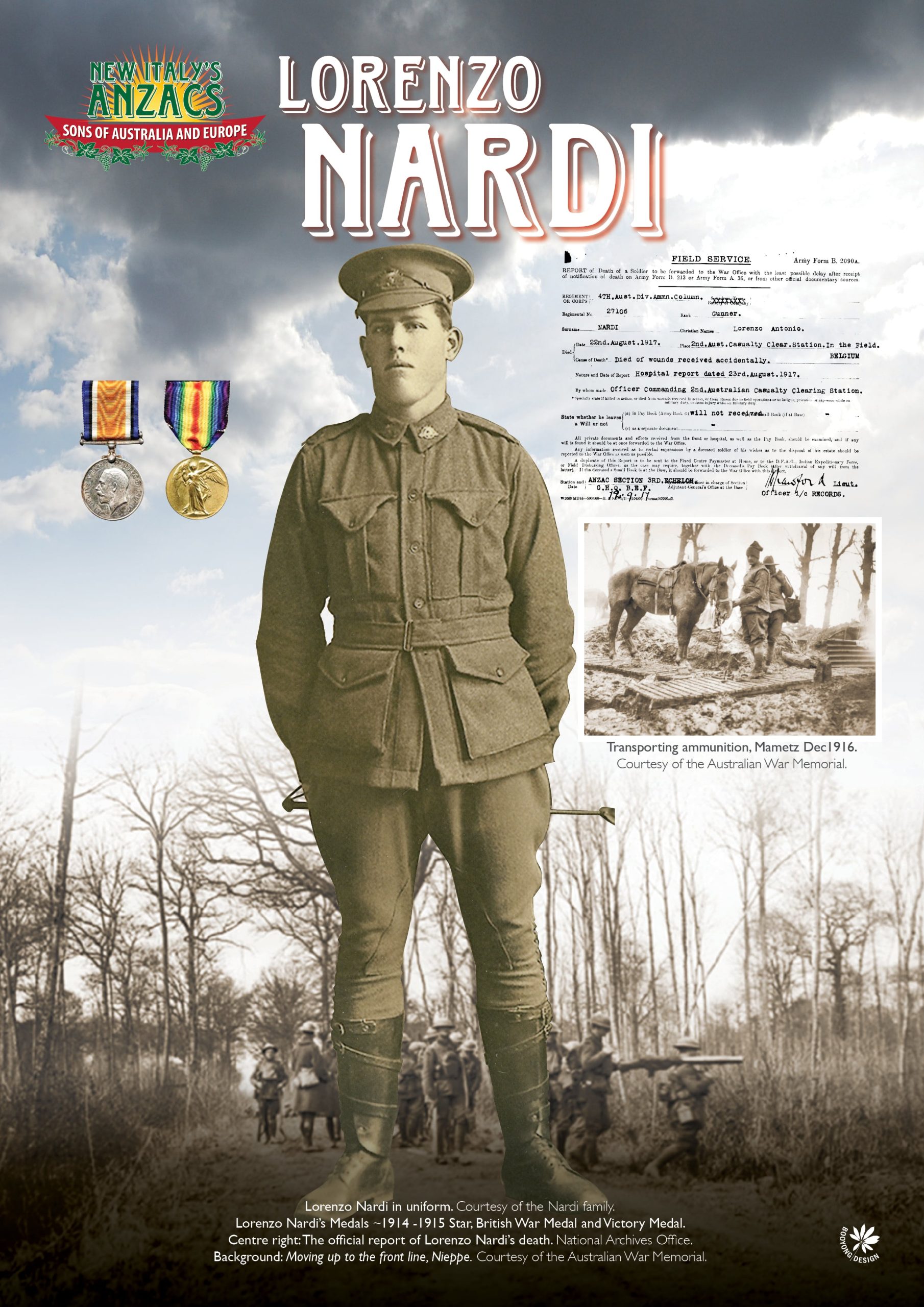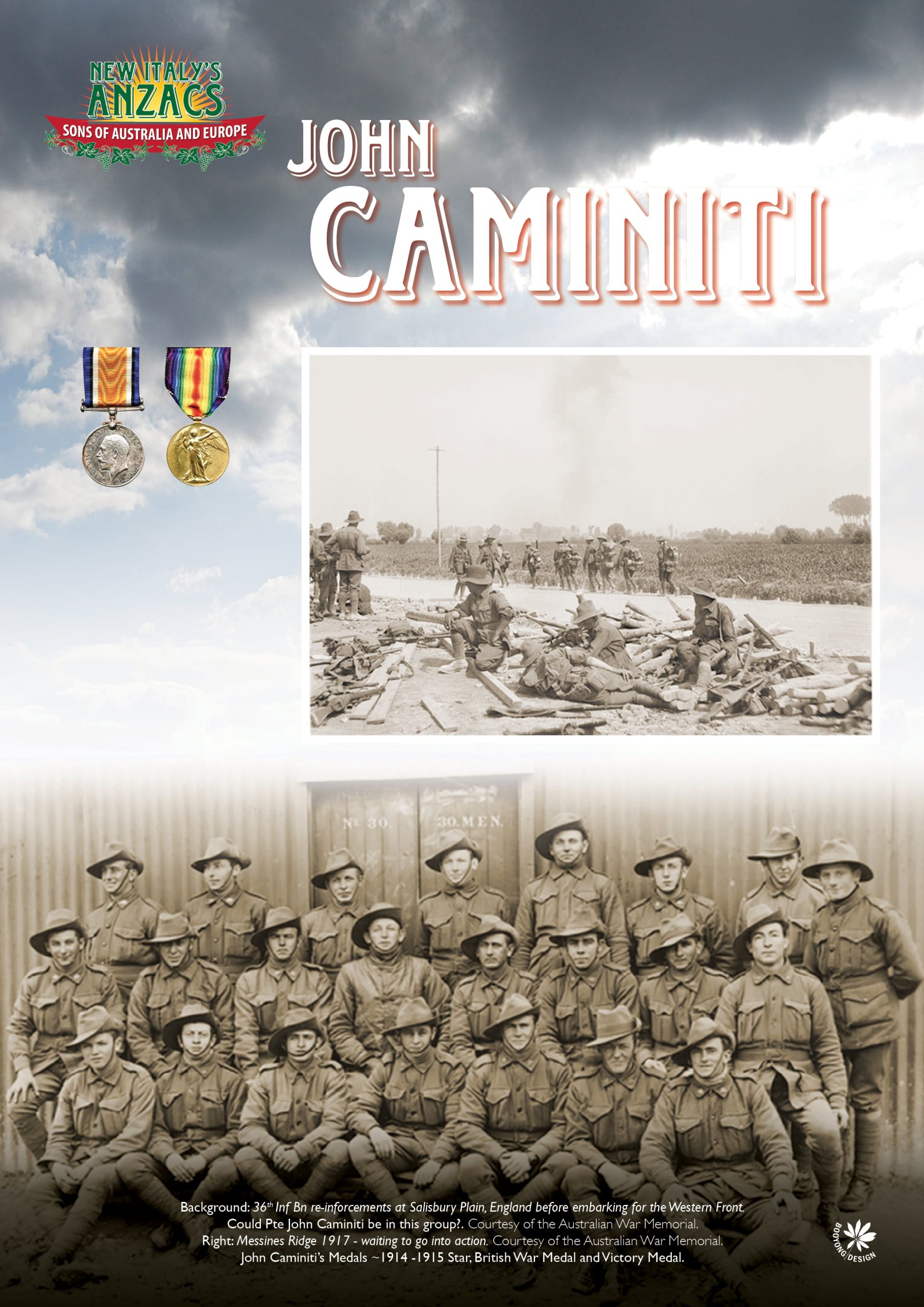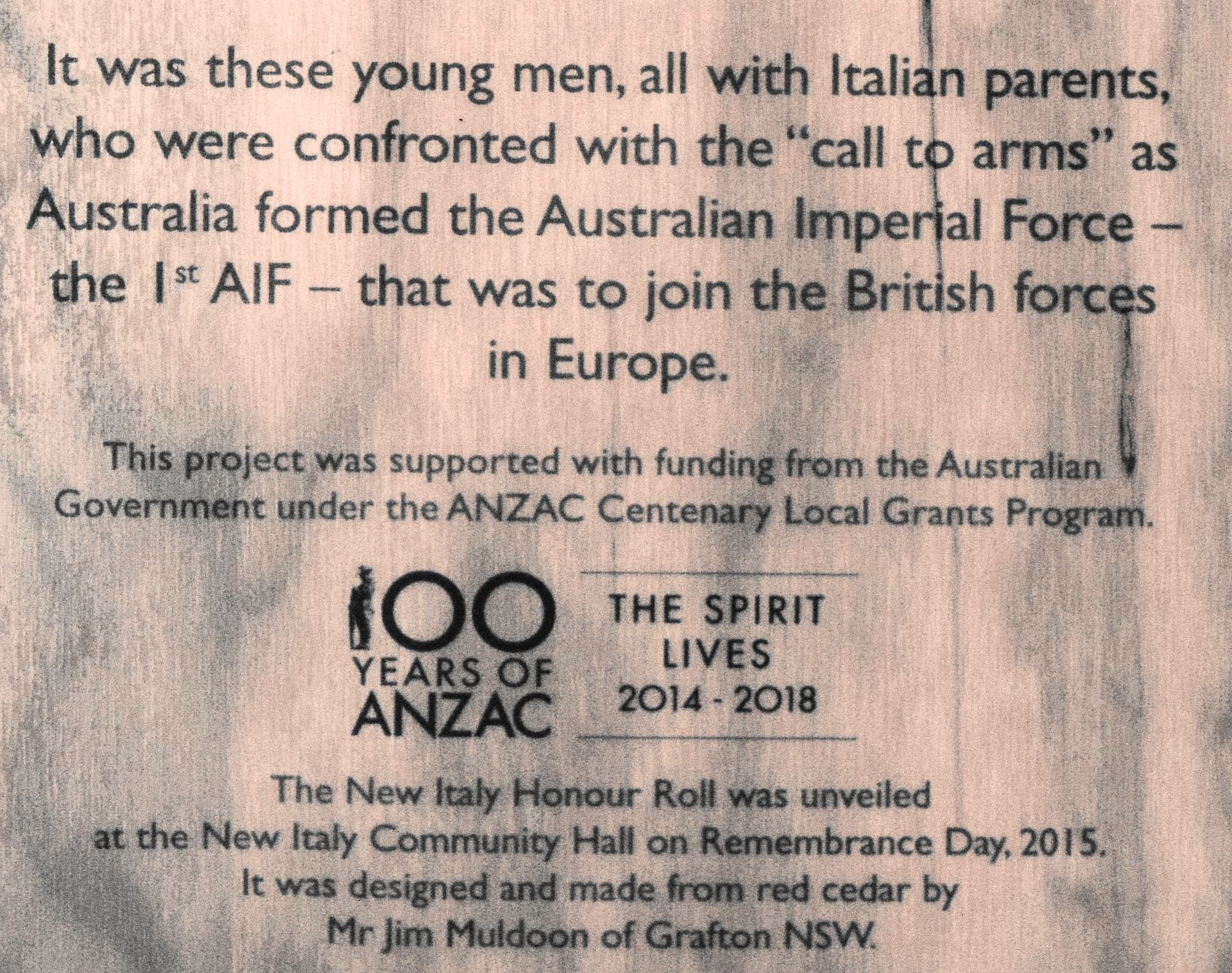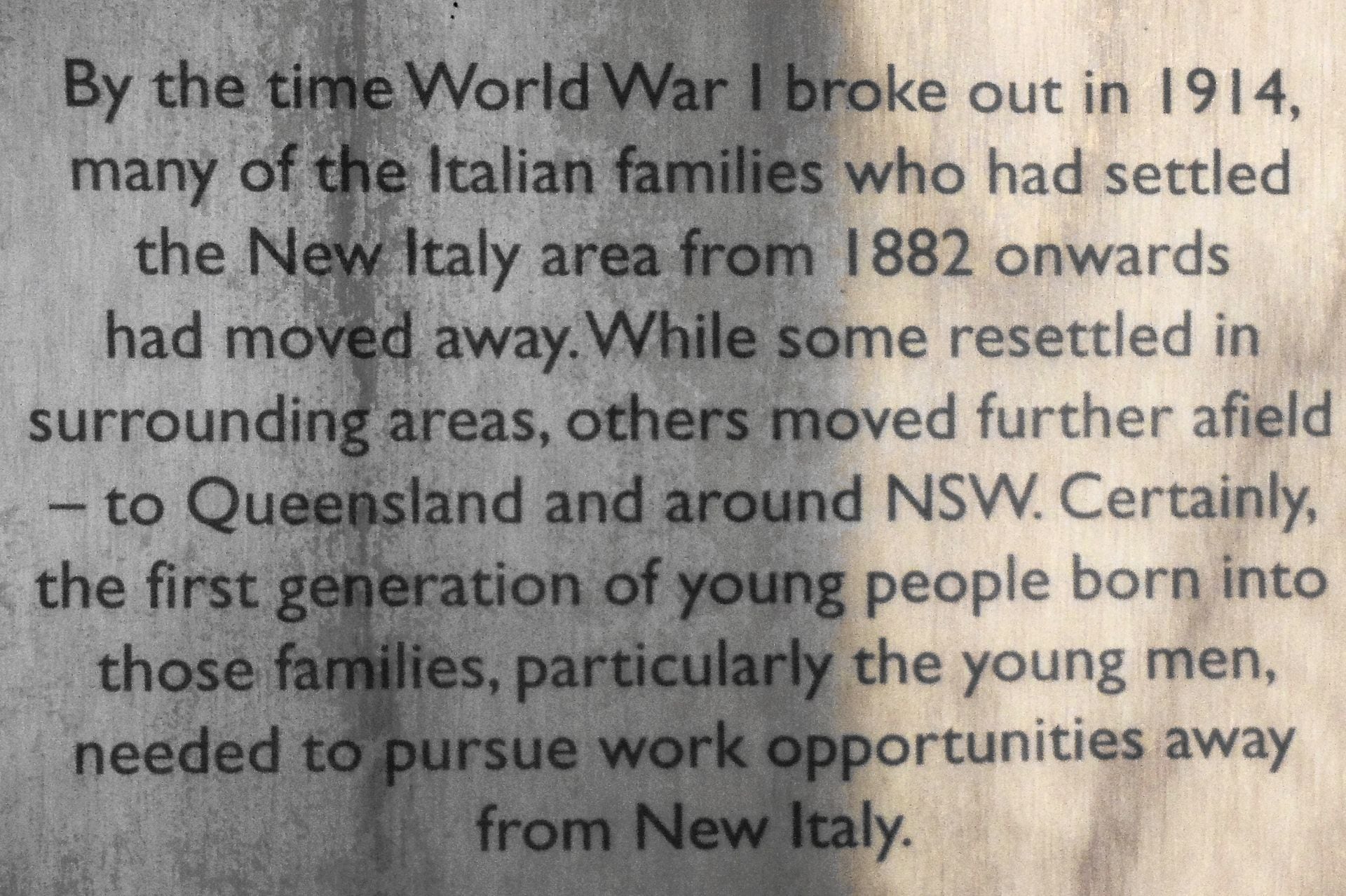New Italy’s ANZACS, Sons of Australia & Europe
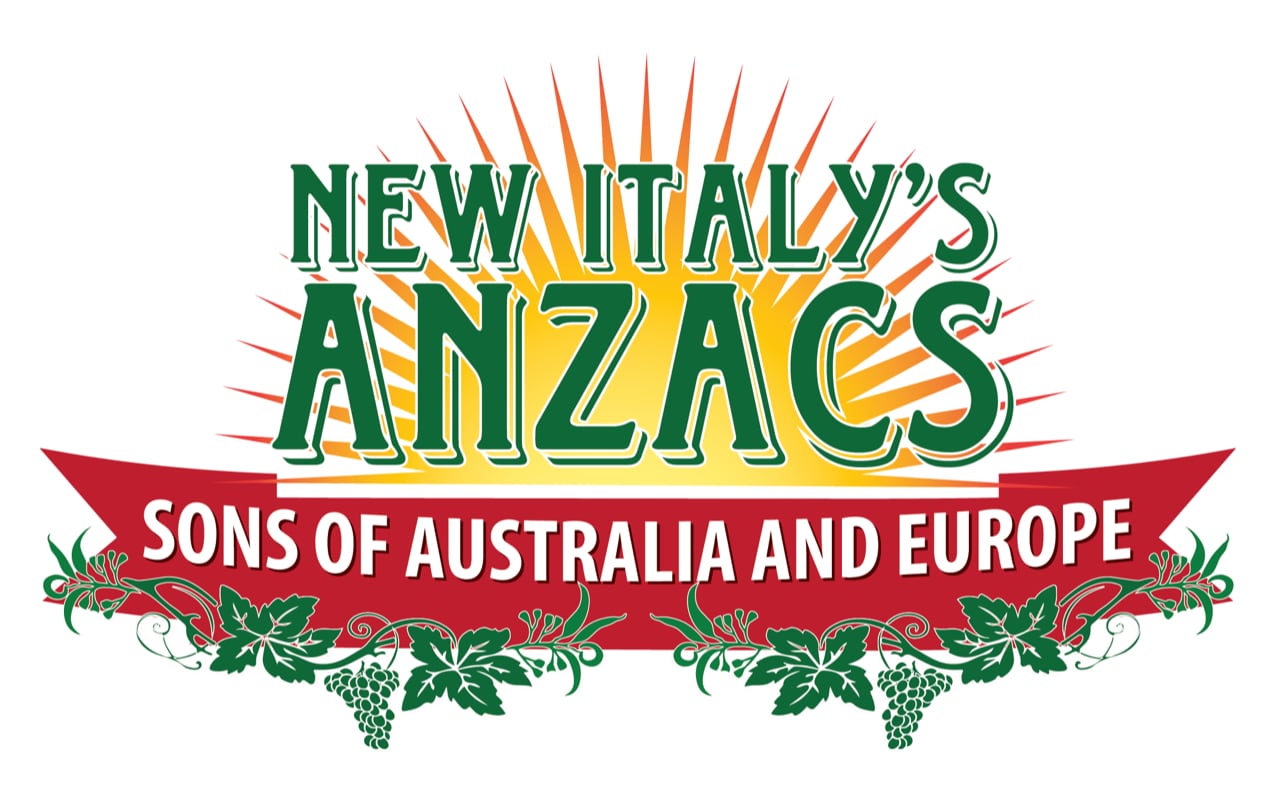
NEW ITALY’S ANZACS
By the time World War I broke out in 1914, many of the Italian families that had settled the New Italy area from 1882 onwards had moved from New Italy. While some resettled in surrounding areas, others moved further afield – to Queensland and around NSW. Certainly, the first generation of young people born into those families, particularly the young men, needed to pursue work opportunities away from New Italy. It was these young men, all with Italian parents, who were confronted with the “call to arms” as Australia formed the Australian Imperial Force – the 1st AIF – that was to join the British forces in Europe.
These young men had no family ties to England or a tradition of loyalty to the King of England. So what were the influences that caused 13 of these young men to enlist and then be thrown into the bloody conflict that was developing in Europe? For some, the gratitude felt to the country that “rescued” their parents would have weighed on them. For others, their sense of mateship with other young Australians who were signing up would have drawn them to the recruiting offices. And of course, some would have experienced the urge to break out of the monotony of their current lives and take part in the huge adventurethat was the war in Europe.
Whatever the reasons for this first generation of the New Italy settlers to enlist in the 1st AIF, these 13 young men became part of the making of the ANZAC legend. Two of the New Italy ANZACs did not return (John Caminiti and Lorenzo Nardi), another seven were wounded and two were decorated for bravery. Those who returned to their families carried with them the
experiences of active service which for most included trench warfare in Belgium and France.
The table below lists New Italy’s Italian ANZACs. This information has been drawn from the publicly available information at the Australian War Memorial and the National Archives Office. Every effort has been made toensure the information is accurate – however, where there are any inaccuracies we would very much appreciate being advised of the correct information. In particular, if there are other descendants of the Italian families who settled New Italy who have not been identified, we would welcome the inclusion of the information on those other enlistees.
Lorenzo Antonio Nardi was the fourth child in Angelo and Lucia (née Spinaze) Nardi’s family of 12 children. He was born at New Italy in 1894 after his parents and grandparents had settled there following the Marquis de Rays ill-fated expedition. When he enlisted on 23 February 1916 he was just over 21 years old and working as a farmer. By then, his family had left New Italy and were living at Tuntable Falls near Nimbin. He was allocated to artillery and embarked from Sydney on 30 September 1916. After further training at Larkhill, England, Lorenzo was sent across to France on 15 March 1917 where he joined the 4th Australian Divisional Ammunition Column (DAC) in the Somme. Troops in the ammunition columns were tasked with maintaining the ammunition dumps, delivering ammunition to the guns (field guns and trench mortars) and front line troops (small arms ammunition, bombs etc.). They also had to handle captured enemy ammunition and worked in particularly hazardous and dangerous situations.
The unit was constantly moving around to meet the requirements for supply of ammunition. By August the unit had moved further north to an area near Niepe and Dranouter. On 21 August 1917, the 4th DAC diary records that 2 ORs were wounded “at Lindenhoek dump carrying salved German fuses”. Lorenzo was one of those soldiers wounded when a fuse exploded causing fatal injuries to his arm, head and body. He died the following day at the 2nd Div Casualty Clearing Station and was buried at Trois Arbres Cemetery, Steenwerck. Such was the incidence of death and injury within these front line units that on 22 August the unit diary records “Nothing of importance”.
Lorenzo’s death was keenly felt by his immediate family. In addition to the loss of their much-loved son, Lorenzo’s parents would have been looking forward to Lorenzo’s return to assist them on their Tuntable Falls dairy farm. Lorenzo’s older brother Vincenzo had passed away in 1913 and he would have been the eldest son and ideally suited to work alongside his father. He now lies in Trois Arbres Cemetery, Steenwerck alongside a gunner comrade from England and an infantryman from New Zealand.
John Caminiti was born in Woodburn in 1886, one of five sons and two daughters of Rocco and Catherine Caminiti. Rocco was one of the original settlers of New Italy, and Catherine (née Gava) was a survivor of the ill-fated Marquis de Rays expedition. When John enlisted on 20 March 1916 he was a fisherman in Sydney and ran a fish shop in Balmain with his brother Rocco. When enlisting, he nominated his mother (living in Rozelle) as his next of kin. At that time, however, he was in a relationship with a young widow, Mrs Millicent Archer who had three daughters from her first marriage and a son (John, b.1914) and daughter (Iris, b.1916) with John. He embarked from Sydney on 17 October 1916 as part of the 4th reinforcements for the 36th Infantry Battalion.
Following several months of training at Larkhill in England, John was shipped over to France and joined A Coy, 36th Inf Bn near Armentierres in 1917. By the end of April he was in the trenches in the Le Touquet sector. Commanded by Lt-Col John Milne, an engineer in civilian life, the 36th Bn was in the front line throughout May and was one of the attacking battalions in the attack on Messines Ridge. On 10 June, the battalion was ordered to secure the enemy positions in the La Potterie farm system. As part of A Coy, John was in the lead attacking formation that stepped off at 11pm. Immediately before stepping off, German artillery laid down a barrage on the attacking Australians’ positions. It is possibly in this barrage that John was killed. His body was found several days later by Pte C C Kavanagh, 1st Otago (NZ) Bn who buried John where he lay. Using information he found in John’s clothing, Pte Kavanagh later wrote to John’s mother to tell her of John’s death.
John Caminiti was initially listed as “Wounded – missing in action”. Subsequently, it was confirmed that he had been killed in action although his body was not able to be recovered. His name is one of many now listed on the Menin Gate memorial at Ypres. The 36th Bn suffered heavy casualties in the attack on the La Potterie farm system – 70 killed in action, 323 wounded and 16 missing in action (one of whom was John Caminiti). Notwithstanding the pressures of duty on the front line, Lt-Col Milne found time to pen a personal letter to Millicent Archer to inform her of John’s death. John Milne was himself killed in action on 12 April 1918.
Millicent Archer worked as a school cleaner to raise her five children. In the late 1920’s she moved from Pyrmont to Belmore, married Frank Banner in 1942 and passed away in 1987, aged 99 years.
This project is supported by funding from the Australian Government under the ANZAC Centenary Local Grants Program.
By the time World War I broke out in 1914, many of the Italian families who had settled the New Italy area from |882 onwards had moved away.
While some resettled in surrounding areas, others moved further afield – to Queensland and around NSW. Certainly, the first generation of young people born into those families, particularly the young men,needed to pursue work opportunities away from New Italy.
<< (18) Church: Faith and Community
>> (LD) Look Down, Look Up


